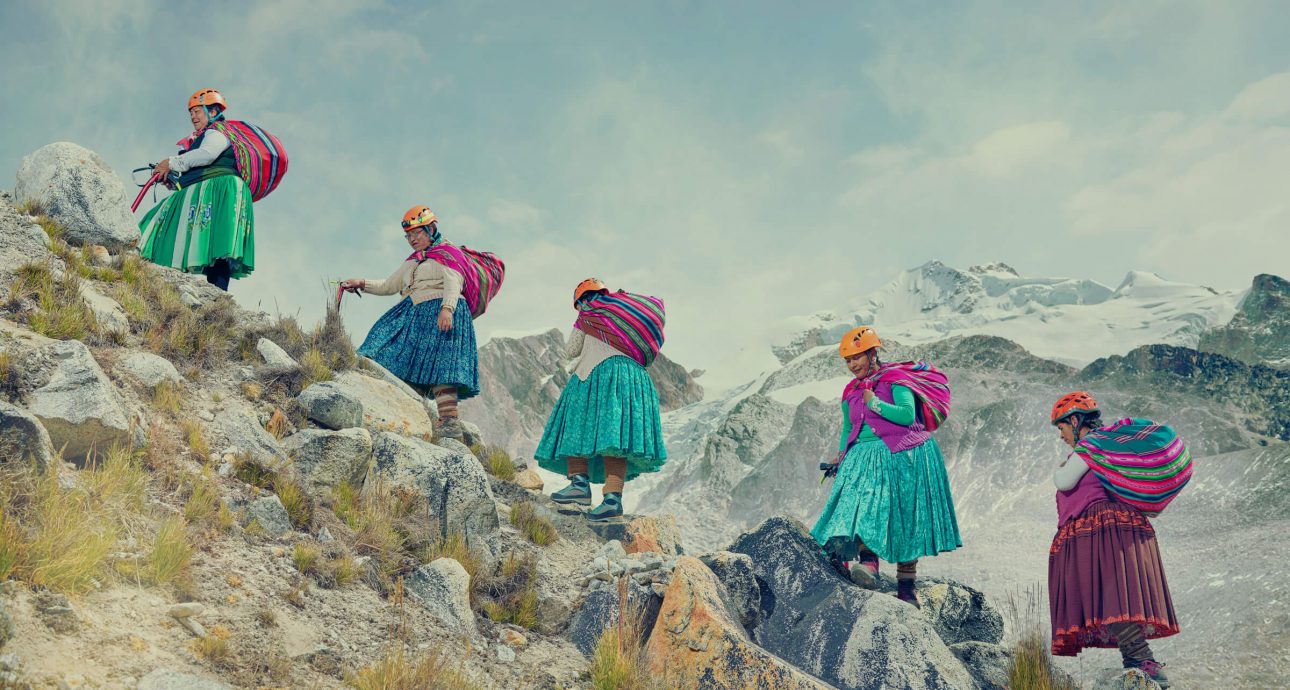
Half-Blood Princesses: Bolivian Cholitas Levitate and Climb Peaks
The Aymara Indians make up about 25% of Bolivia’s population; they live in the west of the country and the highlands of Lake Titicaca. Since the 16th century, when Spain colonized the region, and until recently, the Aymaras were frequently discriminated against. The very word “cholita” was used as an insult – in Spanish, “cholo” means “half-breed.” But now, the women of the Aymara people pronounce it with pride.
In 2019, a group of Bolivian Cholitas climbed the top of Aconcagua (6,962 meters), which is called the “mountain of death.” According to statistics, three climbers die on Aconcagua each year, so only well-trained professionals risk conquering the peak.
Eleven Cholitas worked as porters and cooks for mountaineers at the base camp of Huayna Potosi (4700 meters). Then, in 2014, these women decided to do their own climbing, and after several years of preparation, they conquered the highest peak in South America.
Two years ago, photographer Todd Anthony, who shoots projects about little-known tribes and subcultures, went to Bolivia and captured the “flying” and climbing Cholitas.

Born in New Zealand, based in London and shooting worldwide, Todd Antony is a multi-award winning photographer. His commercial clients include, amongst others, Samsung, Sony, Shell, and the BBC.
“I was doing a small work-related research when I came across a photograph of a Cholita against a backdrop of snowy mountain landscapes. I was struck by the bright clothes of these women and the quirkiness of the pictures. I decided that my next personal project would be about Cholitas. I had a producer friend in Bolivia, and he introduced me to them. They gladly agreed to participate.
Cholitas immediately catch your attention with their bright layered skirts and bowler hats.
These voluminous skirts, called polleras, visually increase the hips’ width, which is considered a symbol of fertility. Spanish conquerors initially introduced these skirts as uniforms for the poorest women in Bolivia. Today, Cholitas dress like this of their own accord; this is already part of their culture.
Meanwhile, the bowler hats appeared in Bolivia in the 1920s. According to legend, a large shipment of hats was ordered from Europe for railway workers, but they were too small for them. Rather than send them back, the hats were given to the Aymara women. Some versions of the story say the women were told wearing the hat would help with fertility; others that a savvy hat merchant marketed them to the women as being all the rage in Europe. Under the hats, the Cholitas’ black locks are parted at the nape of their neck and woven into two braids. At times, they use dark alpaca wool to add volume, length, and weight to the locks. As for shawls and capes made from traditional colorful aguayo material, Cholitas use them not only as an element of clothing. The antique Bolivian aguayo blanket is also used to carry babies and transport goods to the market.
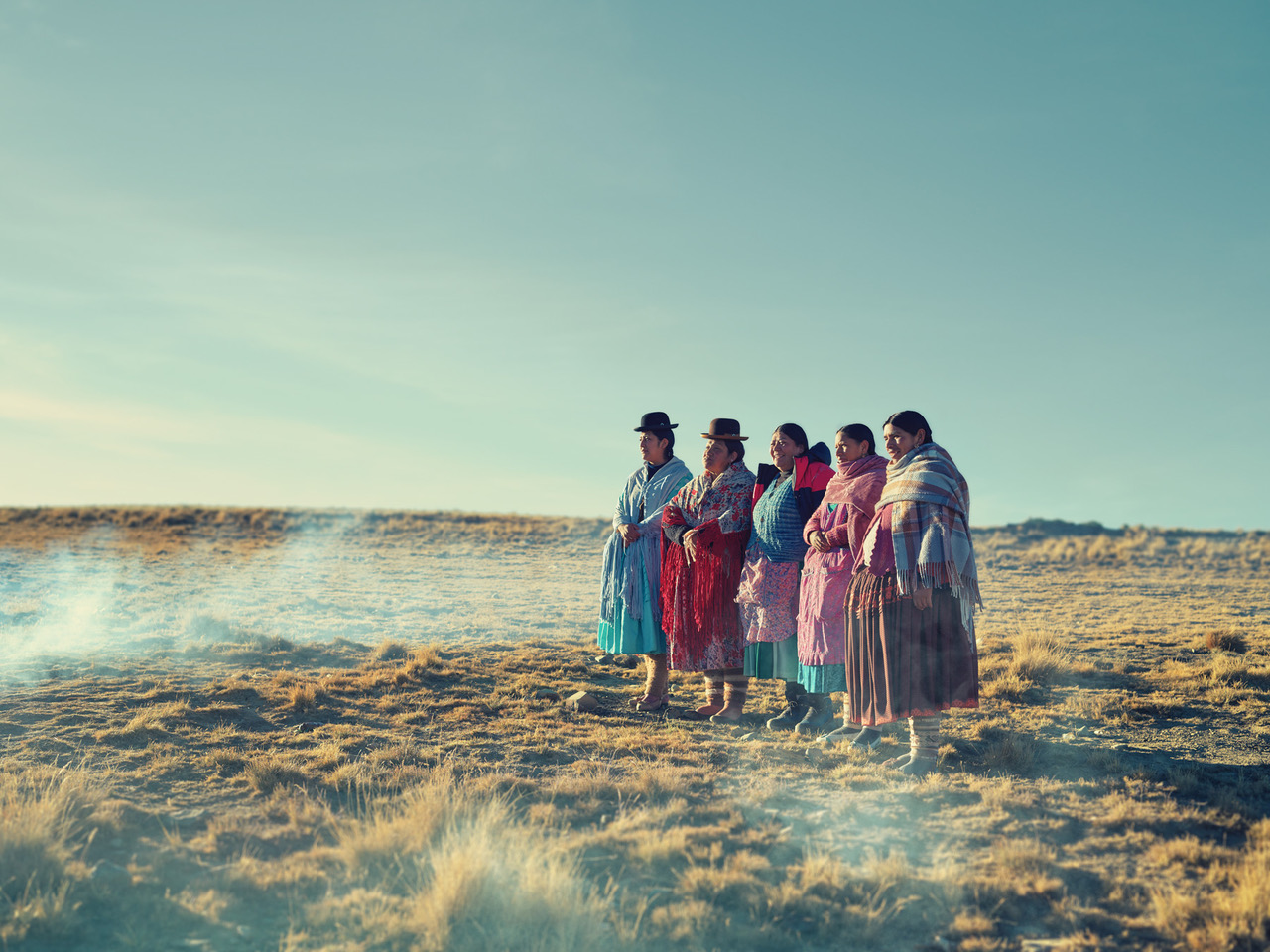
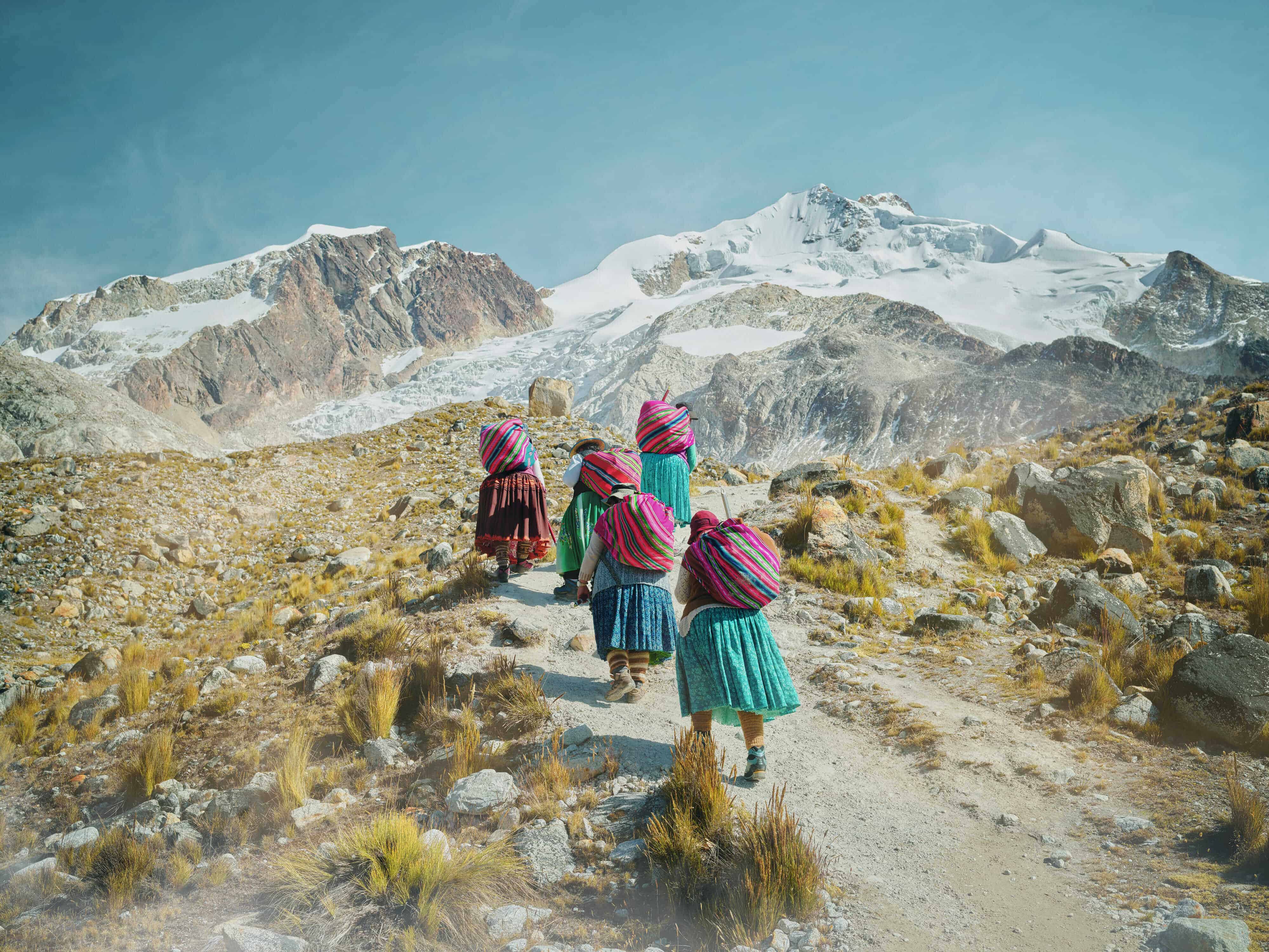
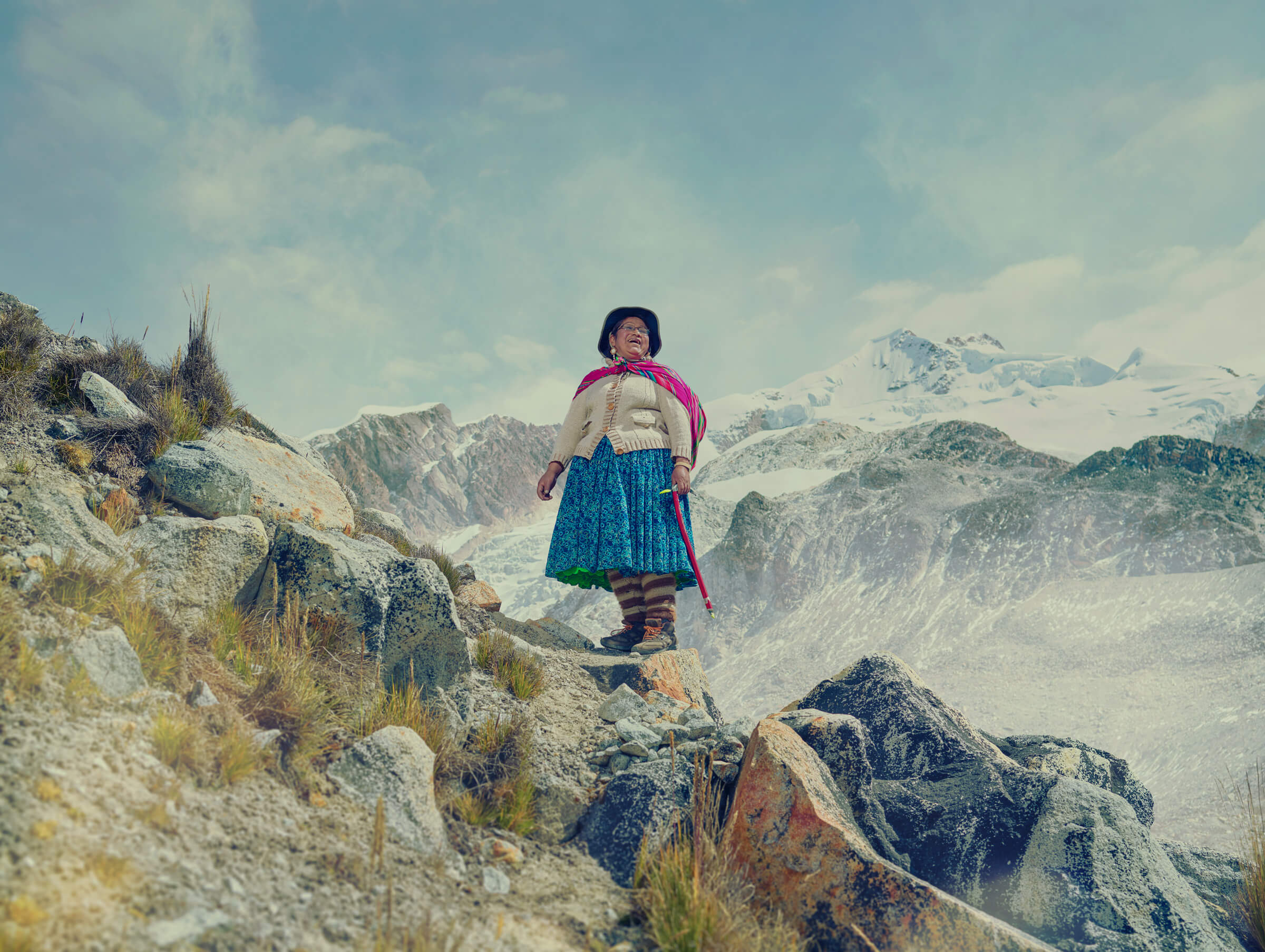
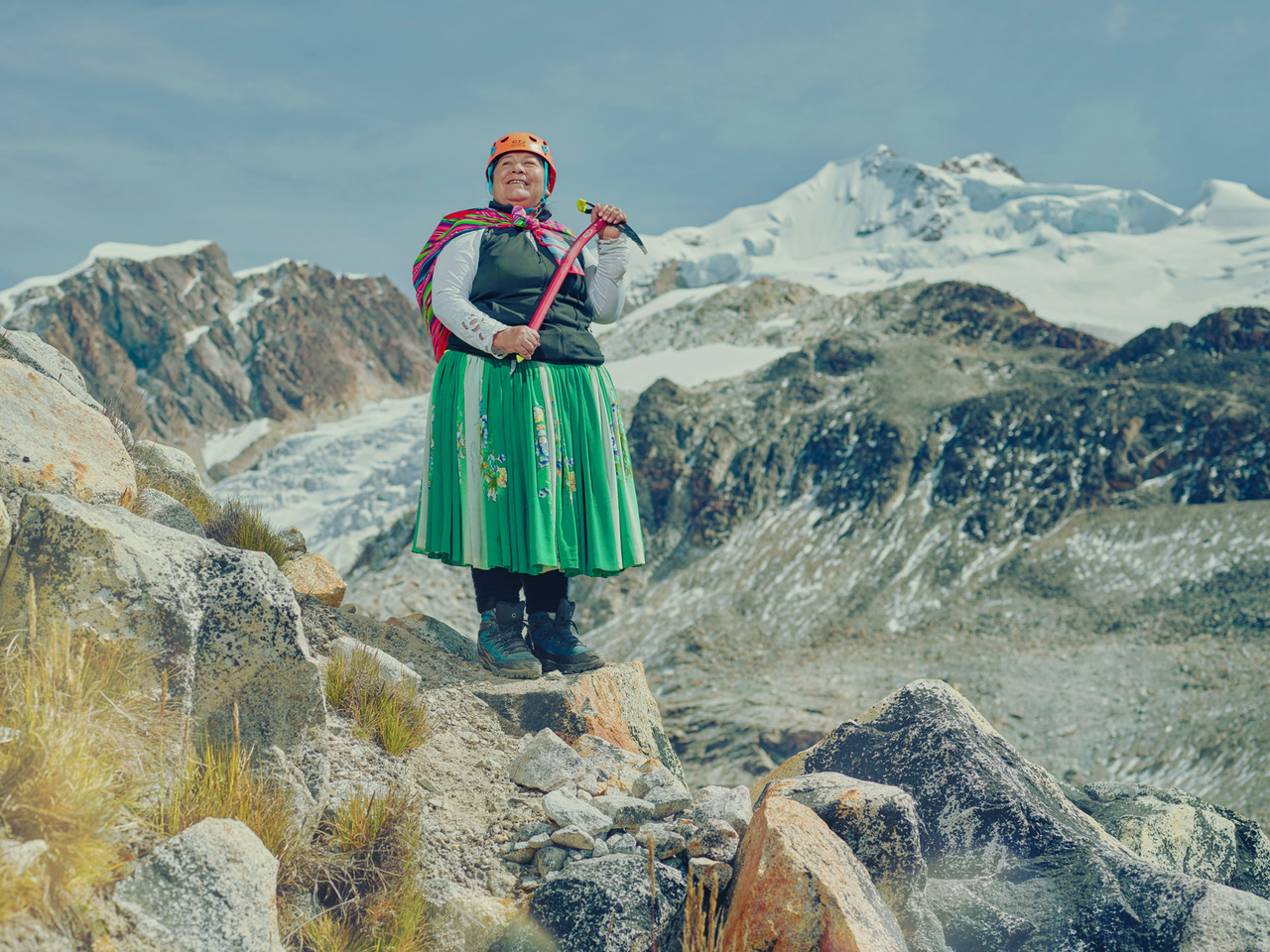
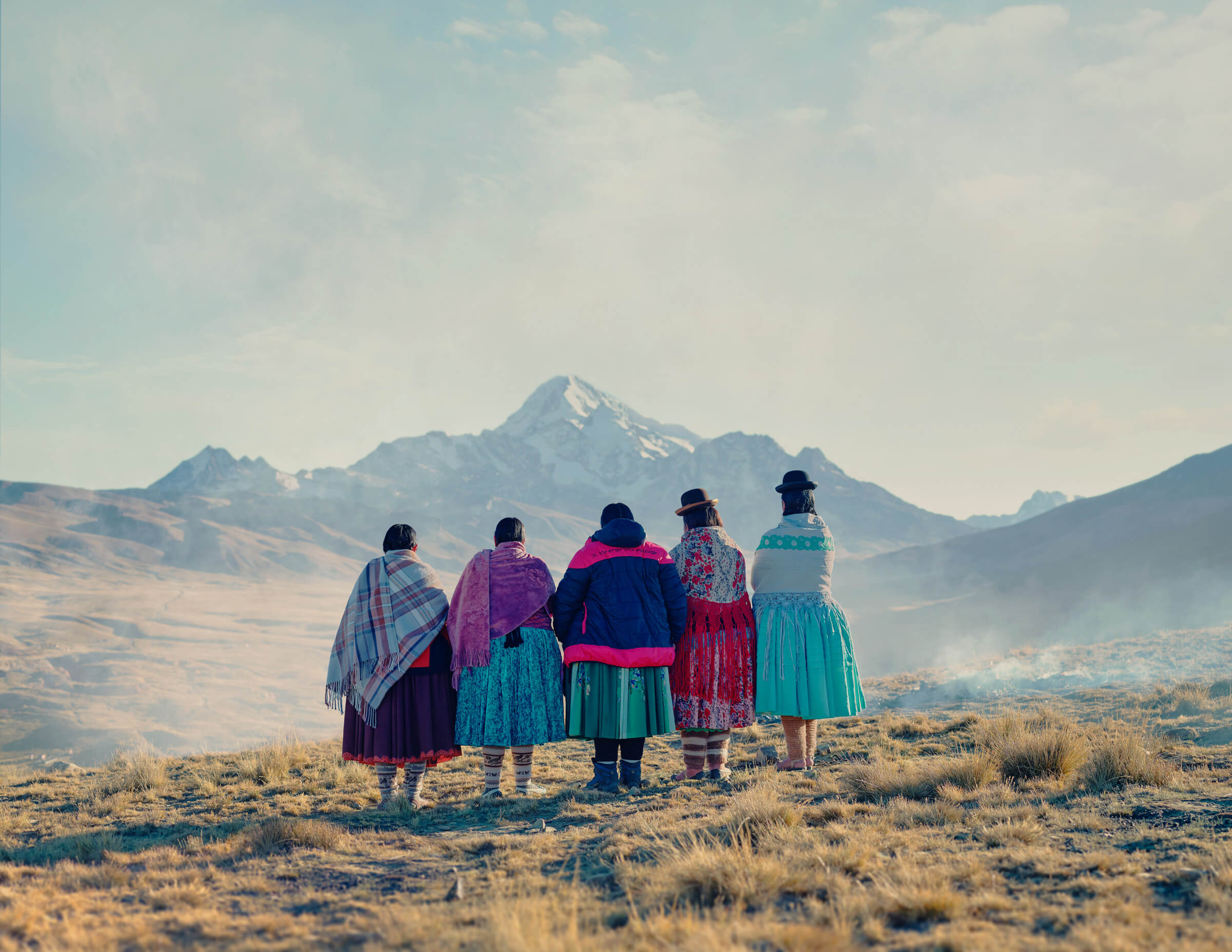
Cholitas have faced ethnic oppression and exploitation since the Spanish colonization of the region. Just seventy years ago, they were denied the opportunity to vote and refused entry to restaurants, public transportation, and certain wealthy neighborhoods. The choice of occupations available to Cholitas was also limited. They were mostly engaged in serving the Spanish occupiers, farming, weaving, selling on the streets, or serving choripanes at stands (chorizo sandwiches popular with the locals). Since the 60s, Cholitas have fought for their rights. Still, the turning point came only in 2006, when Evo Morales, a representative of the indigenous population, was first elected president of Bolivia. With his arrival, the Aymara and other ethnic groups of the country finally gained recognition in the society.
Just seventy years ago, Cholitas were denied the opportunity to vote and refused entry to restaurants, public transportation
However, the situation of Cholitas and other women in Bolivia is still difficult. The country has a high level of domestic violence, and the established stereotypes about the Aymara Indians are changing rather slowly. Challenging them, Cholitas began to engage in street fighting.
The fights came here from Mexico, where wrestlers perform in colorful masks and costumes. In the 1950s, there were several successful wrestling groups in Bolivia, but it was not until the early 2000s that the first female group calling themselves the Flying Cholitas joined them. Today, the spectacularity of this show attracts many viewers. The wrestling Cholitas enter the ring in their peculiar skirts. A typical fight lasts two to three hours and is mostly a staged performance. But despite all the theatricality, Cholitas often use real grappling and hitting techniques to demonstrate their strength and win the applause.
When planning the shooting of the Flying Cholitas, I wanted to move away from the usual image of wrestlers in the ring and take the viewer by surprise. I thought about the magical realism permeating the culture of South America. So I moved Cholitas from the ring to the streets and made them fly. I will not reveal the secret of levitation, but I will say that Cholitas did a great job during the shooting. They had to repeat their tricks over and over until we got the perfect shot.
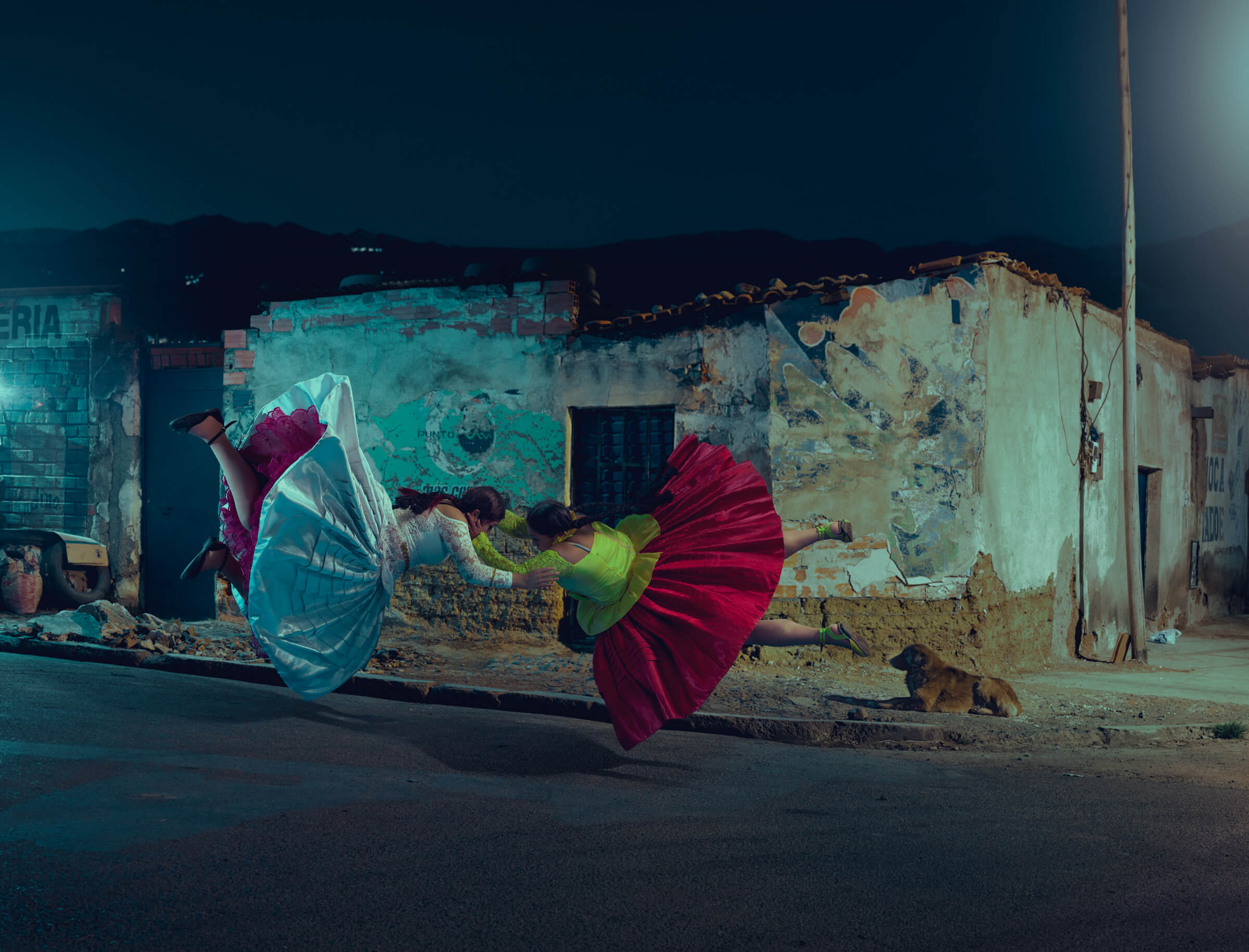
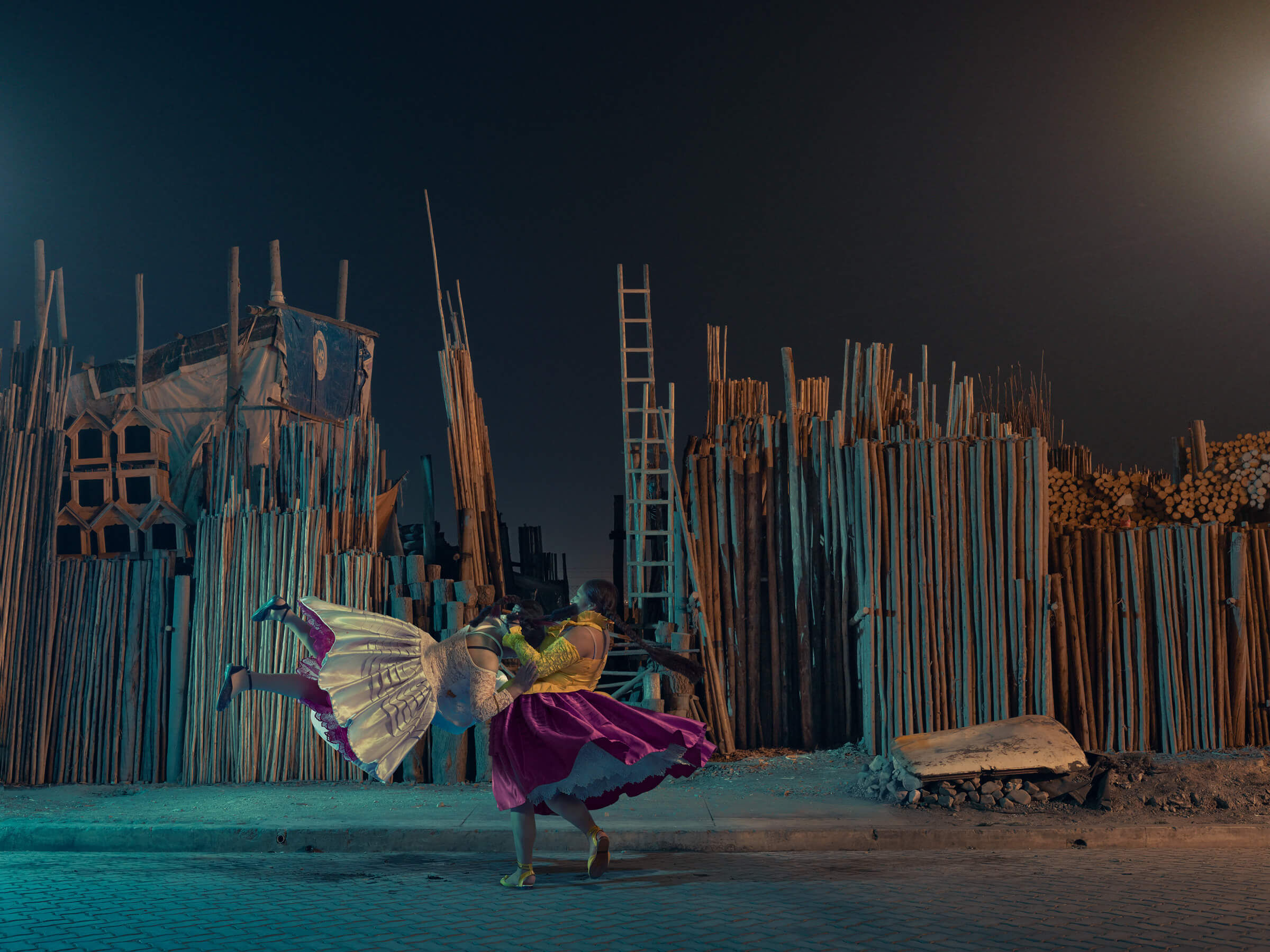
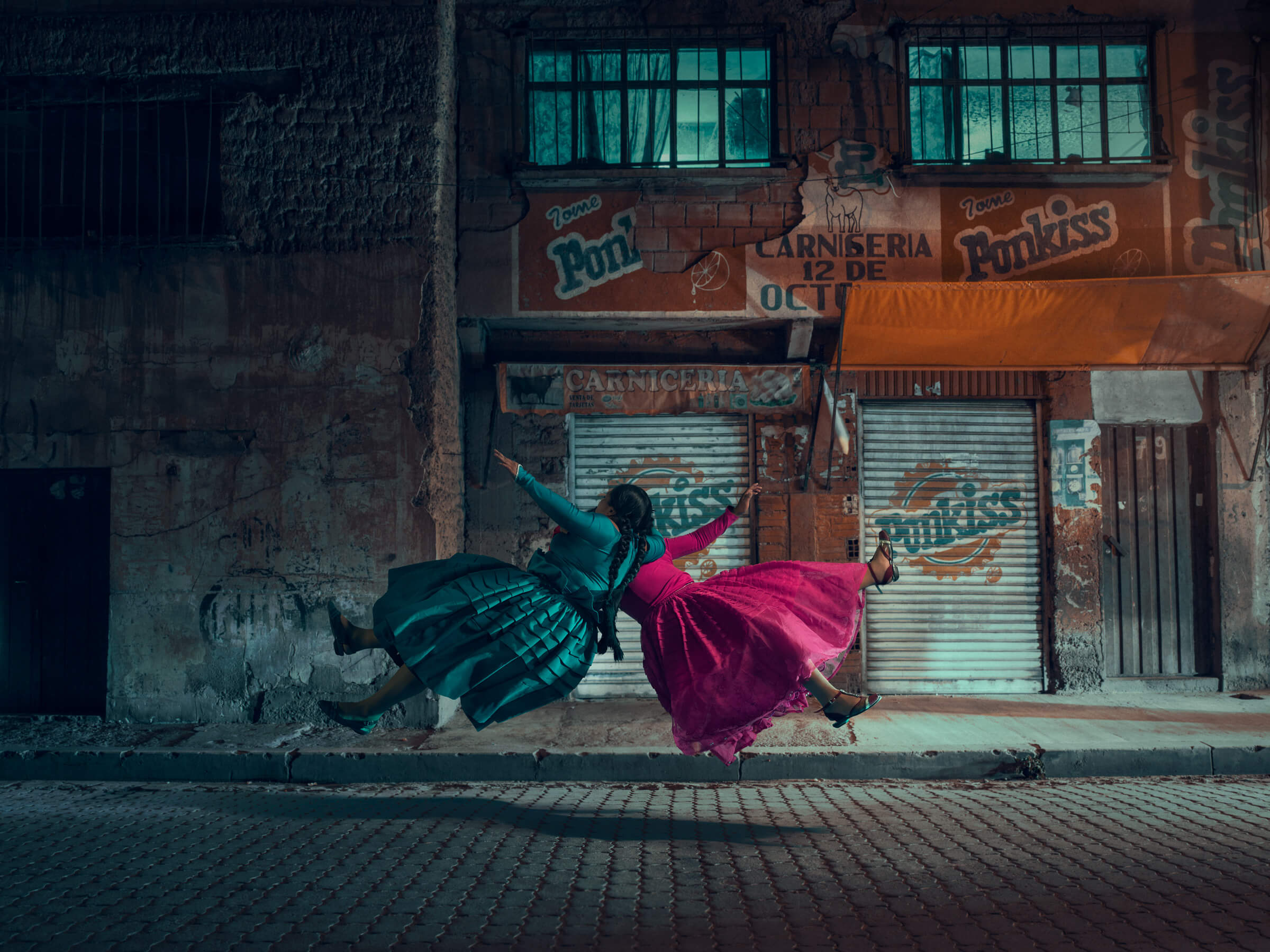
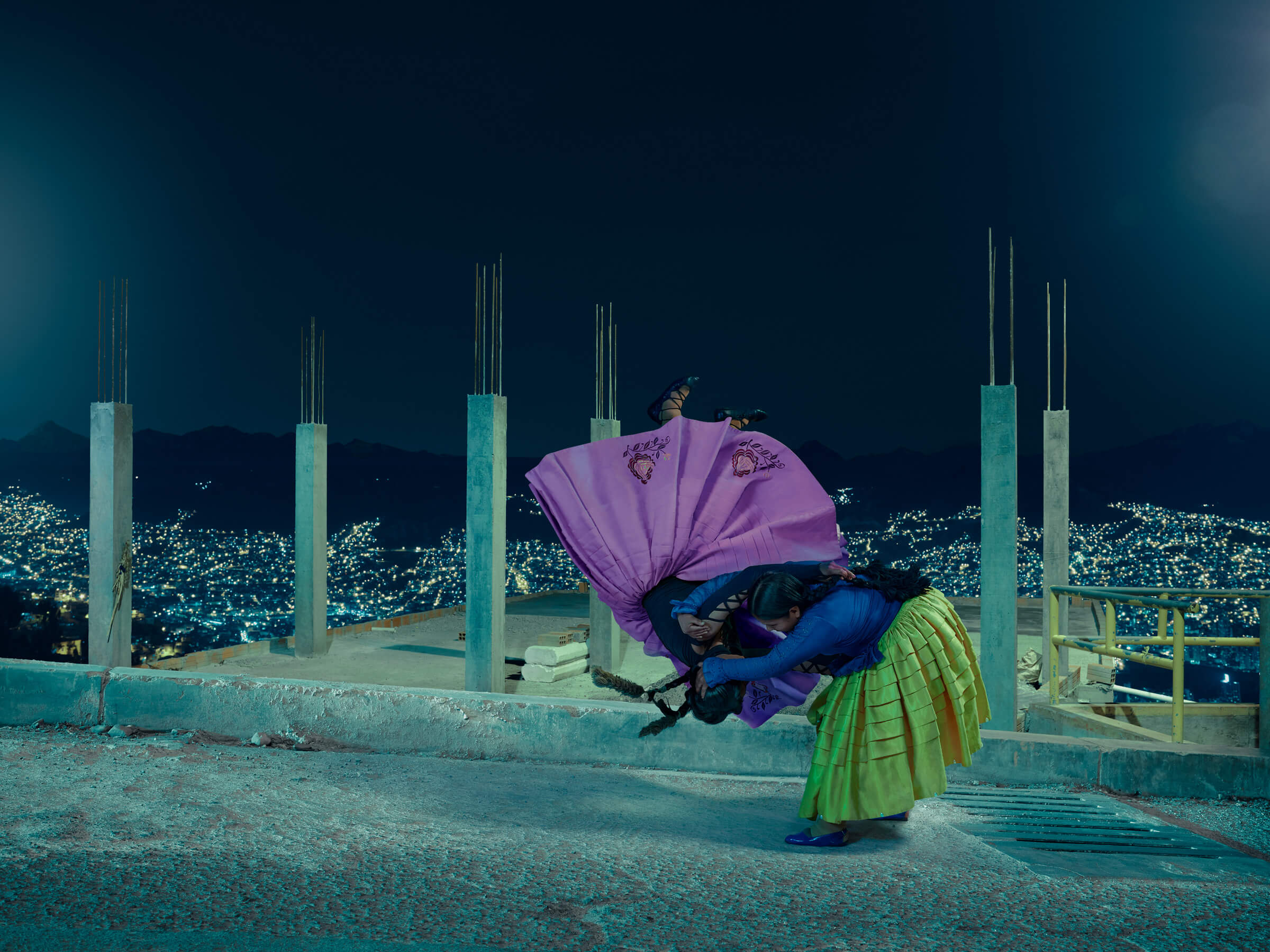
I thought about the magical realism permeating the culture of South America. So I moved Cholitas from the ring to the streets and made them fly.
Working on the Flying Cholitas project was exciting, but I was eager to go to the mountains. My assistant Harry and I were worried about the height; we did not know if we could withstand it. After five days in La Paz – at 3,640 meters above sea level – it seemed to me that we were already well prepared for the climbing. However, when we arrived at Huayna Potosi base camp, the altitude immediately began to take its toll on us. On the first day, we left the base camp and climbed to the 5,100-meter mark. Of course, it was silly: such a sharp climb can lead to serious health problems and cause altitude sickness. But then the weather was excellent, and in the mountains weather often changes, so it is hard to predict how long the sunny days will last. Plus, I noticed the stunning crevices of the Zongo Glacier and wanted to photograph them in sunlight.
We took beautiful photos of Cholitas on the glacier, but the height took all our strength away. I have never felt so weak and overwhelmed, even during the worst flu of my life. Fortunately, there were porters on the mountain who helped us with the filming equipment. Cholitas, meanwhile, walked through the mountains as if along the seashore. On the first day of filming, they hosted an Aptapi, an indigenous communal meal during which the participants exchange food. Passing potatoes, corn, and tortillas to each other, these women paid tribute to the ancient Indian tradition and celebrated the partnership and mutual assistance that helped them climb the mountains.
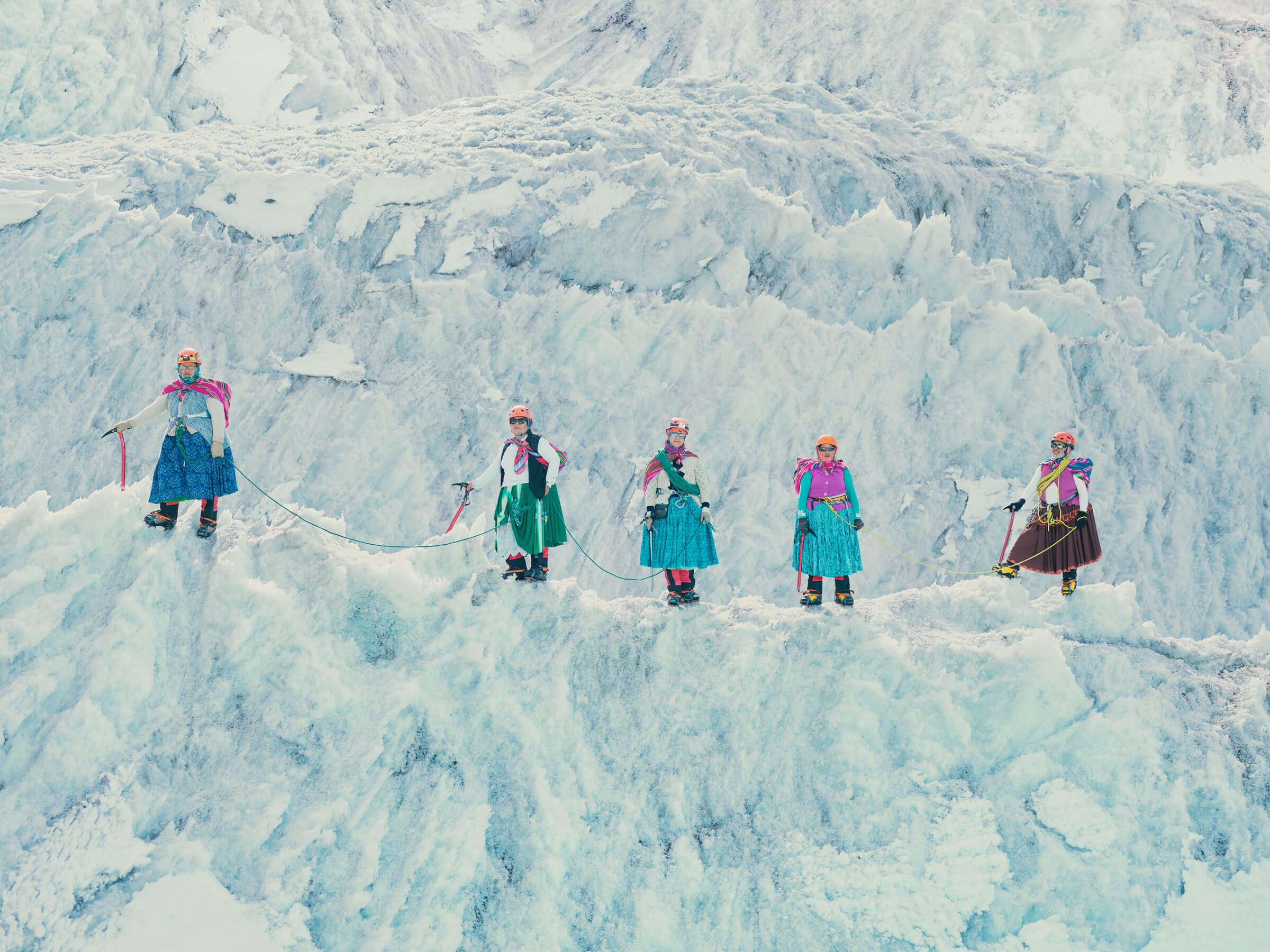
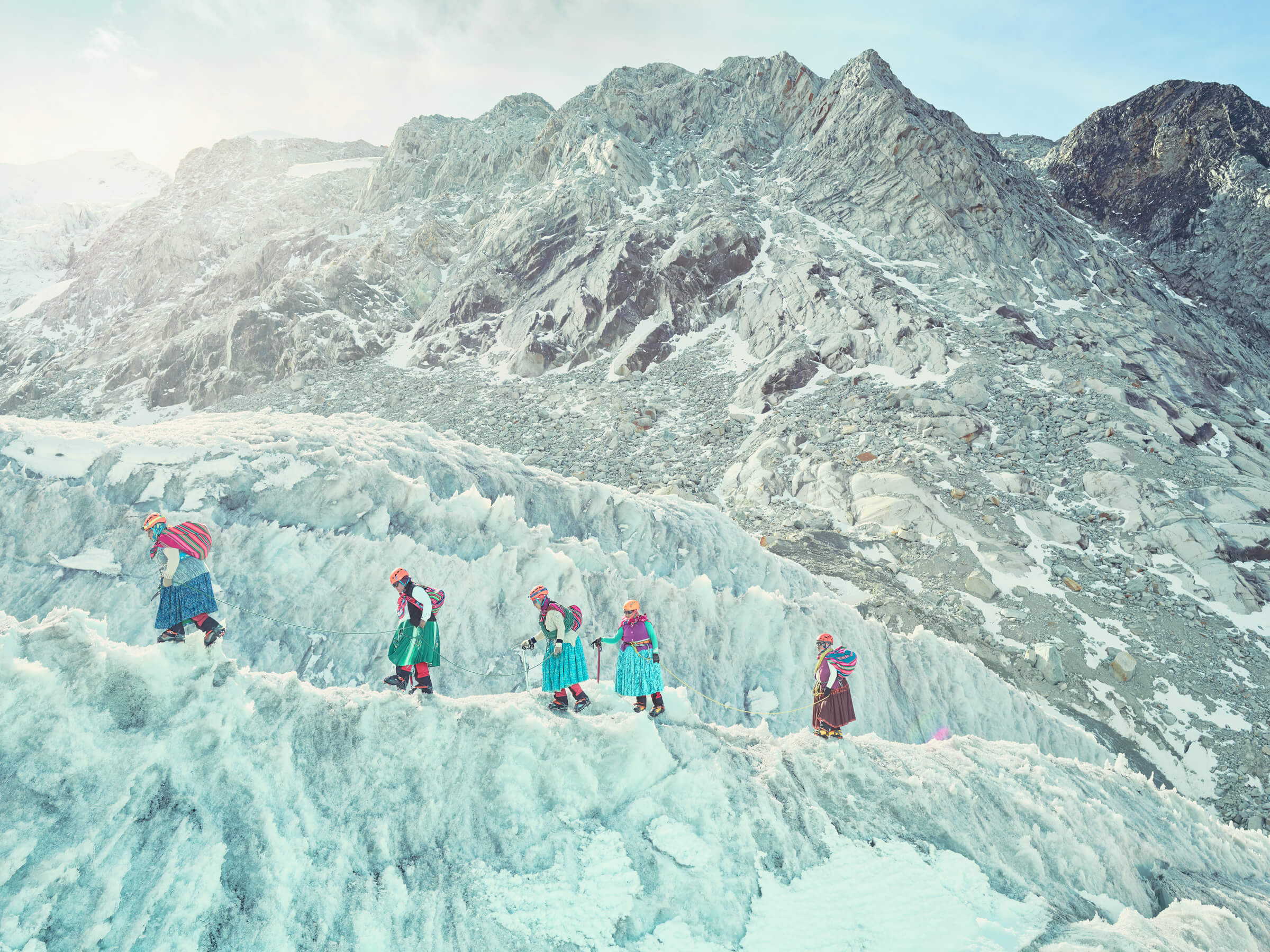
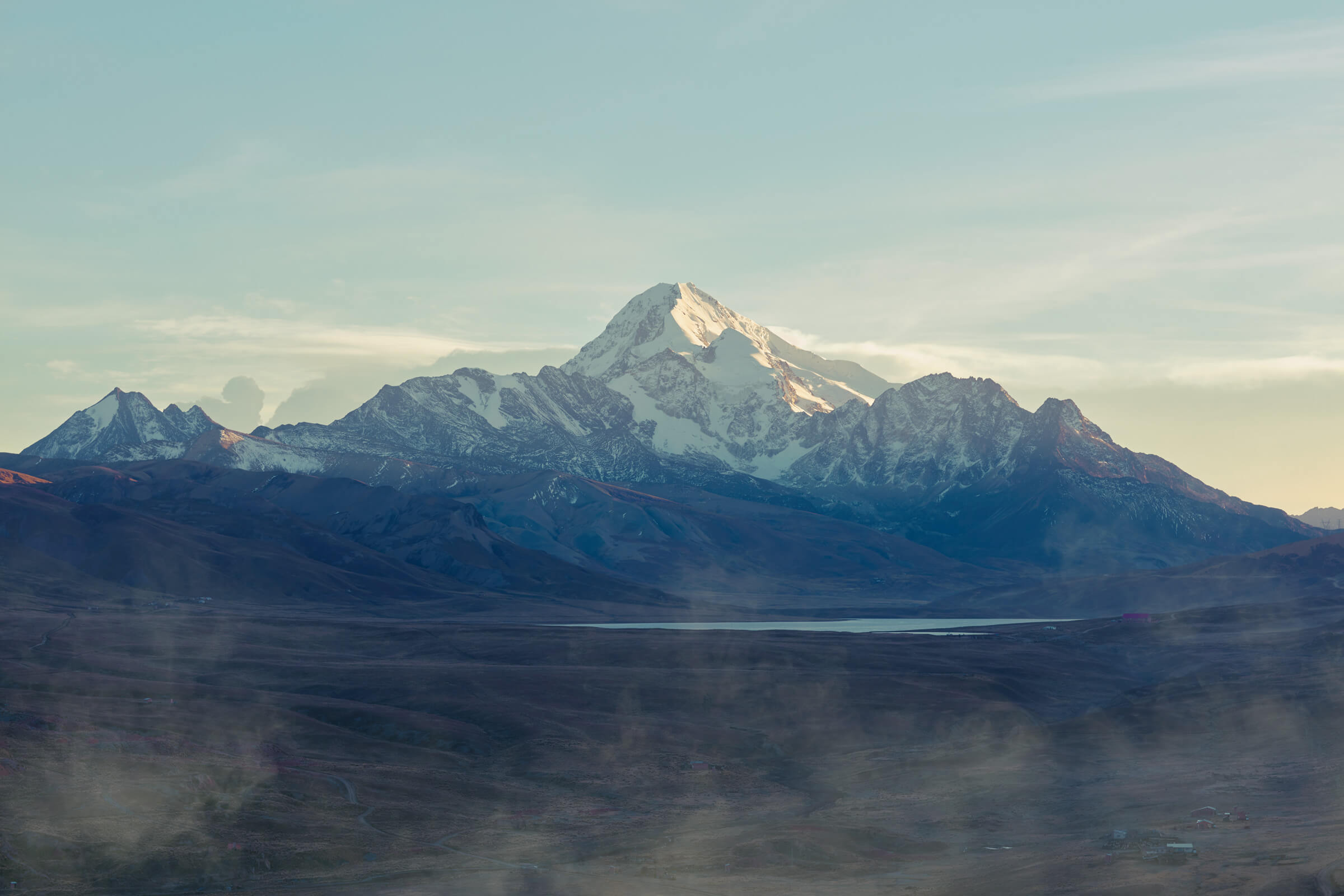
The next day we got up at dawn for the Chala ritual: an offering to the goddess Pachamama, one of the principal deities of the Indian peoples of South America. We left the tents, saw Huayna Potosi towering over us, and I could not imagine a better stage for a spiritualistic ceremony. At the end of Chala, we had to drink the strongest alcohol that I have ever tested. When I took a sip, tears gushed from my eyes; it was as though I had swallowed fire. Cholitas then laughed heartily; they said, “Now the goddess will take pity on us and allow us to climb to the top.”
Looking at them, one might have thought that ordinary Bolivian women, having gone out for a tortilla, suddenly found themselves abandoned in this snowy kingdom.
As in the case of the Flying Cholitas, the idea behind the mountain photography project was to create a fantasy scene where reality is intertwined with magic. But on the slopes of Mount Huayna Potosi, I did not have to resort to secret levitation techniques. Cholitas, in their bright outfits against the background of ice ridges, looked like fairy-tale characters. If you do not look closely at the photographs, you might think that ordinary Bolivian women, having gone out for a tortilla, suddenly found themselves abandoned in this snowy kingdom. And only then, noticing their mountain boots and ice axes, do you realize the courage and perseverance of the heroines of the pictures.
Being accustomed to hard work and equally hard struggle, Cholitas remained cheerful both in the mountains and in the ring. Thanks to my acquaintance with them, I found inspiration, strength, and good friends. When I am asked to describe the Aymara women briefly, only one thing comes to my mind – they are unbending.
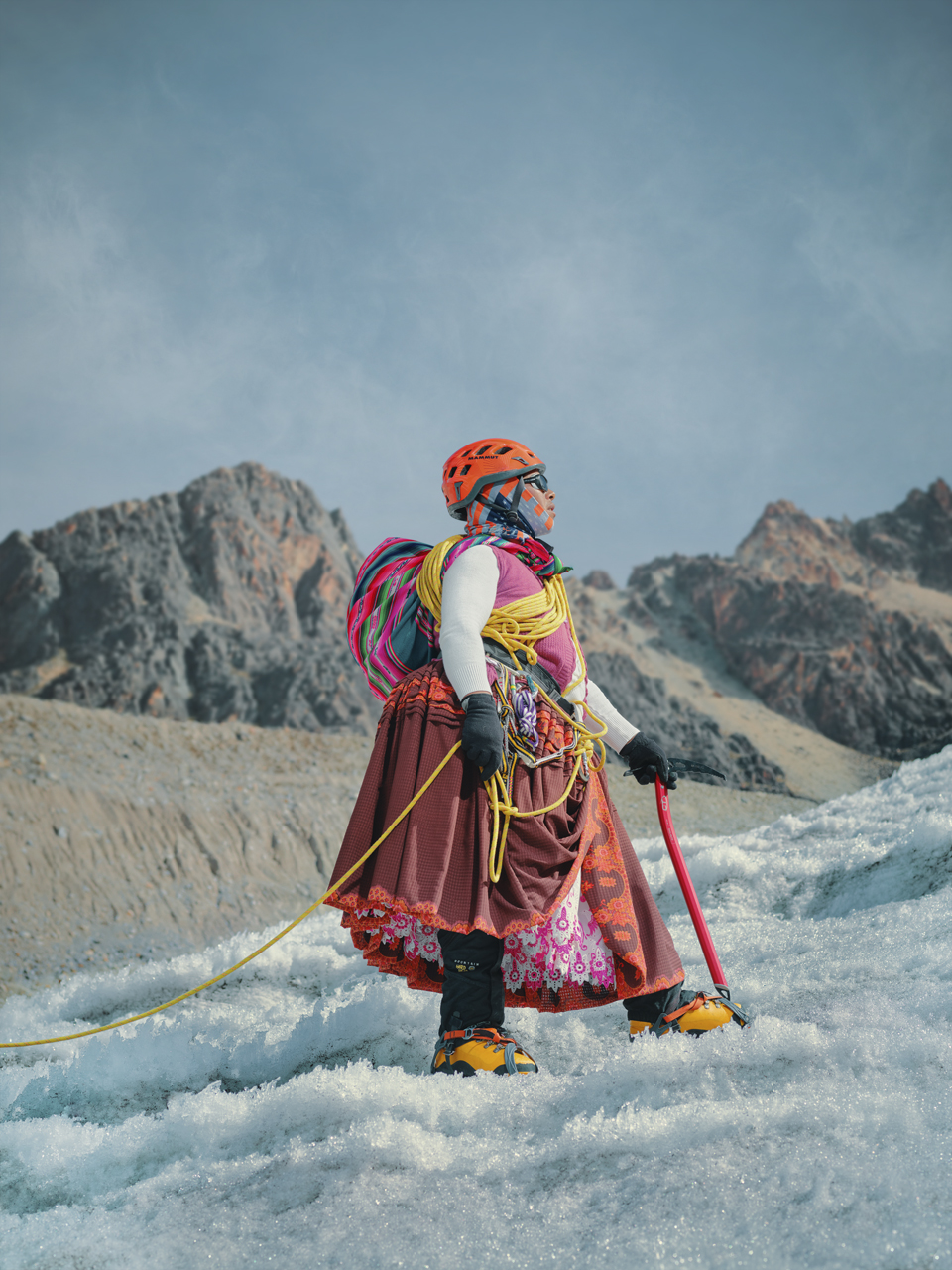
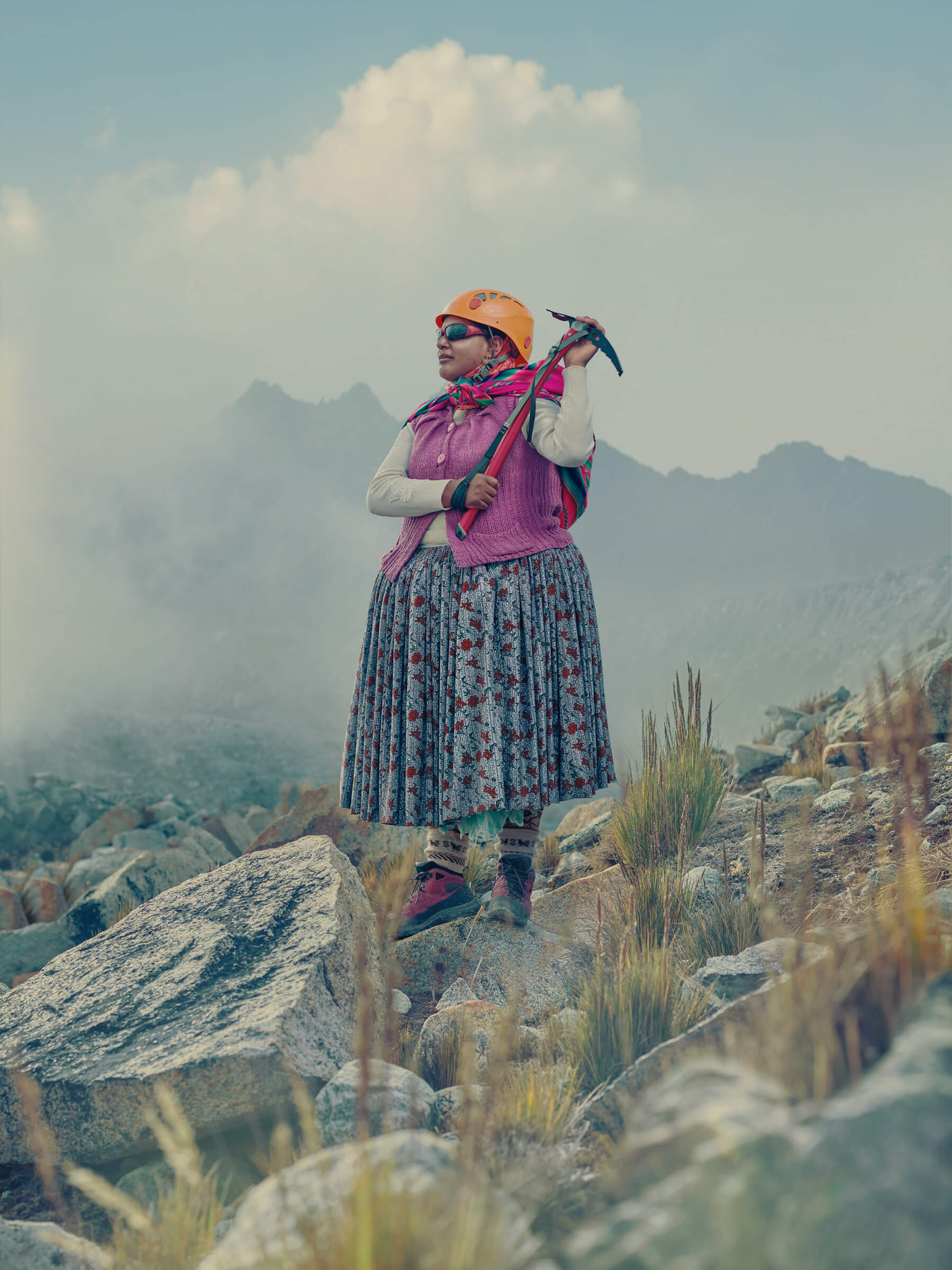
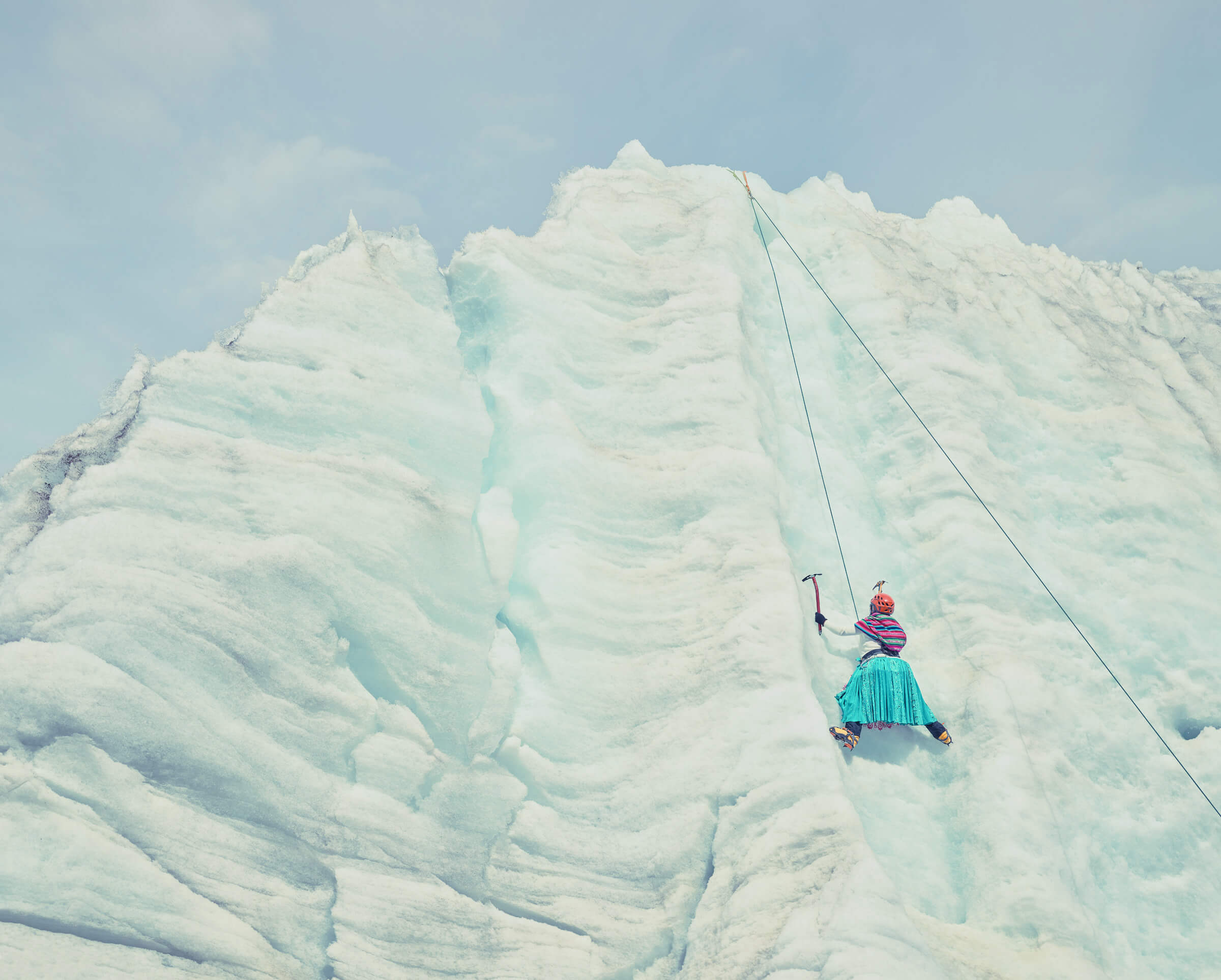
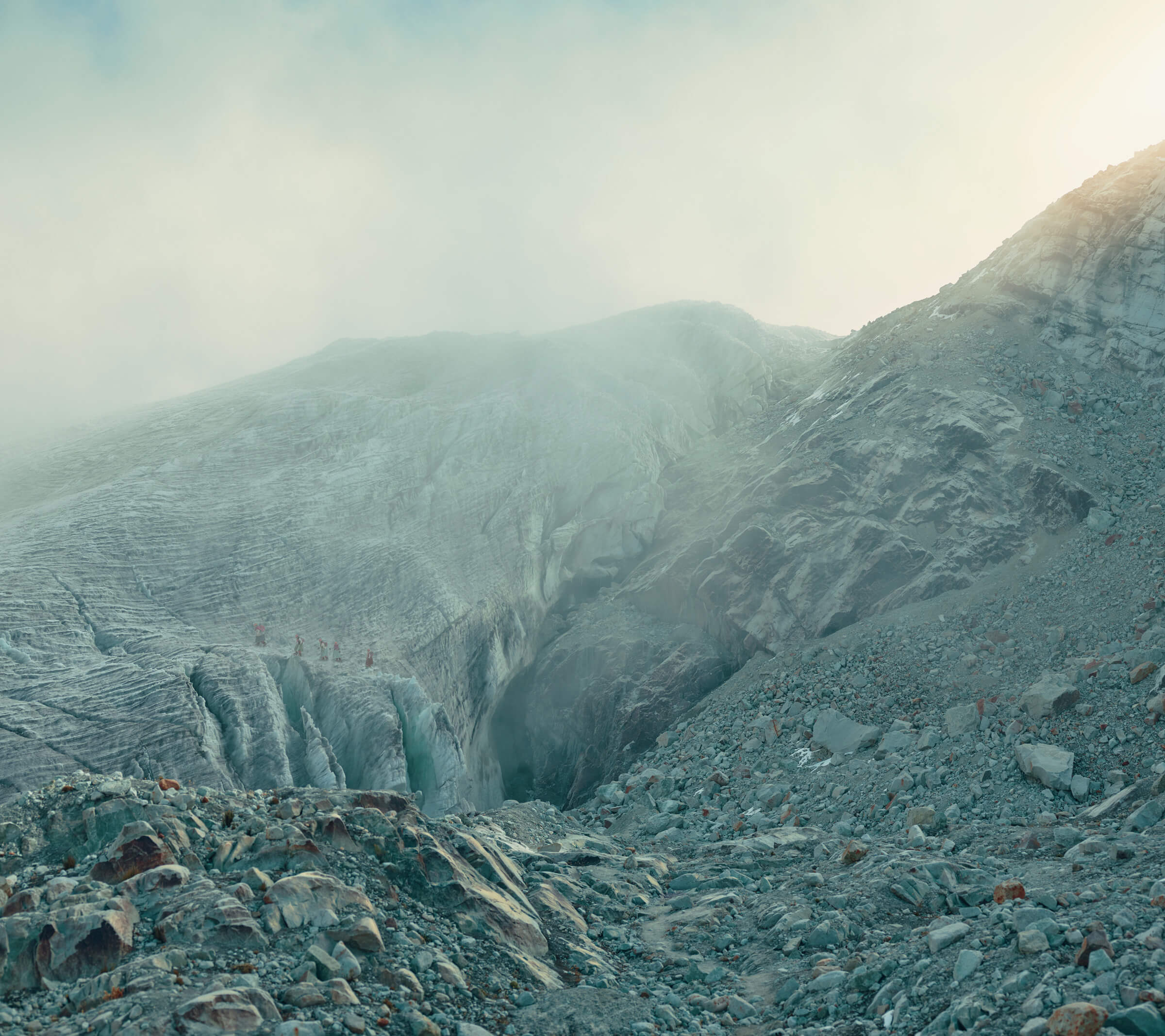
Translated by Lubov Borshevsky
New and best




